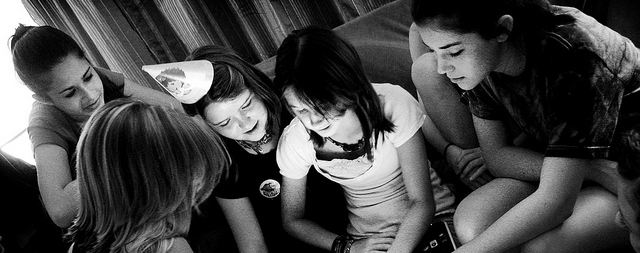Quick Tip Wednesday: How to Set Up a Gratitude Month
Welcome back to Quick Tip Wednesday!

Last week, our "Watch It, Try It, Share It" was all about digital citizenship. We shared tools and training resources that educators and administrators can use in creating a #digcit program in their classrooms. More of our education and general life experiences are moving online, so it's important that we give students the tools and understanding they need to interact on the web--and how their online actions can have a real-life, offline impact.
Safety is among one of the top concerns among parents when it comes to teaching their children about using the internet. It's a valid point; while making new (albeit unknown) friends or sharing about themselves from behind a screen might seem safe to children, there's always potential for unknown consequences for this type of behavior. While drawing the line between privacy and safety can be difficult, establishing open communication about online actions is key to protecting students in our virtual world. In fact, Google executive Jared Cohen believes this conversation is equally--if not more--important as substance abuse or sex education:
"We’ve talked to parents in New York, Saudi Arabia, Africa, and it becomes very clear that their children are using technology at a pace that’s faster than their physical maturity process, so kids are using technology earlier and faster. Our conclusion in the book is that parents need to talk to their kids and start early about the importance of online privacy and security, years before they even talk about the birds and the bees.
I remember in health class in elementary school where, you know, they scare you away from using drugs, they scare you away from having unsafe sexual activity, they scare you away from using alcohol and tobacco. This is part of that conversation."
Participating in online society comes with many of the same circumstances you'd find in a real-world society. There are laws, communities, etiquette expectations--even different languages. Understanding the nuances of this online universe comes with experience and a solid foundation in digital citizenship. From composing polite, professional e-mails to spotting and reporting cyberbullying, there are many things new members of our virtual society need to learn.
While it may seem common-sense to say "treat others as you'd like to be treated--even in your chat group," the anonymity and false sense of security that a screen provides mean that it's easier for children to respond rashly to a negative situation. Teaching students about the permanence of their online footprint is crucial--just because they've deleted the rude message they sent doesn't mean it's gone--and more importantly, doesn't mean that it didn't have an impact on it's recipient. It's like the popular toothpaste analogy that circulated the internet last year--once the message has been sent, it's impossible to take back.
Digital citizenship isn't all about teaching "the dangers of the Web." Giving students the tools they need to navigate technology can empower them to expand their learning. Online research strategies and creative and academic-focused apps and games can open up a world of educational opportunities. Think of the first grader building a digital prototype in TinkerCAD, or a high-schooler collaborating with a student from halfway across the world on a video project.
Teaching children about positive internet and device use can be as simple as modeling it in the classroom. A tech-positive environment can be established using the SAMR model, which guides educators in enhancing and transforming their teaching through technology. Giving students access to these tools during school time, rather than having them navigate them on their own, allows adults to instill healthy online habits during the learning process. It can mean the difference between a student using Minecraft to learn about coding, or simply using the program's chat or battle feature purely for entertainment and socializing.
Learning when to use the internet is just as important as learning how. According to the American Academy of Pediatrics, children from 2-5 years old should only engage in screen time for a maximum of one hour per day. For children six and above, that number is more flexible. The AAP encourages families to take responsibility for setting these limits. "Parents are in charge of setting limits on digital media for kids and teens six and older. [...] The amount of daily screen time depends on the child and family, but children should prioritize productive time over entertainment time."
In this context, screen-time is defined as using devices purely for entertainment purposes; it does not include using a computer for homework or school projects. As computers and smartphones become more ubiquitous, this line between what qualifies as screen-time and what's considered "productive" device use has blurred. Setting boundaries and establishing ways children can positively incorporate technology into their daily lives is the first step in creating these healthy habits.
What have you done at home or in your classroom to promote digital citizenship? What are the greatest advantages and challenges facing this tech-savvy generation? Let us know in the comments below!
Stay tuned for more from our Digital Citizenship series!
Image attribution
Site: flickr.com [Image 1]
.png)
Welcome back to Quick Tip Wednesday!

Mid-Year Reflection: Your Secret to a Stronger Second Semester
A great way to get your learners engaged in your Alludo program is by keeping the content in your program up-to-date and relevant. Rebecca has...